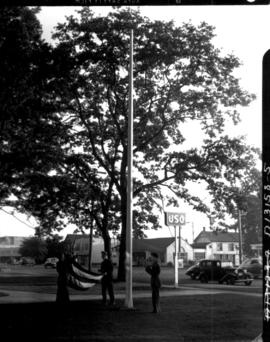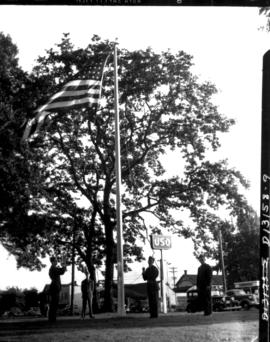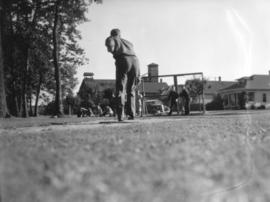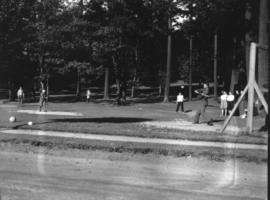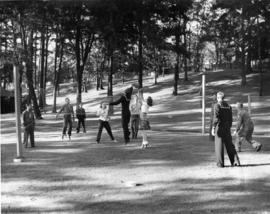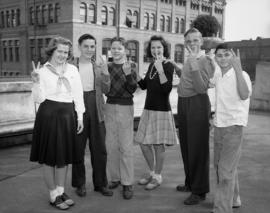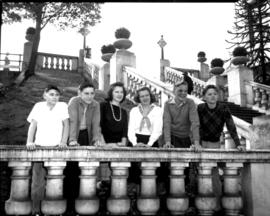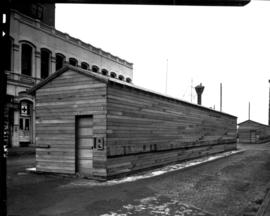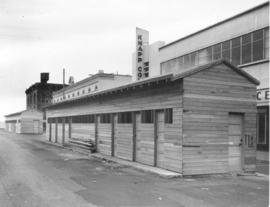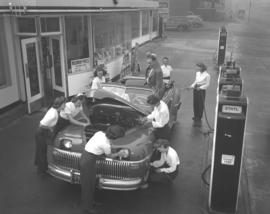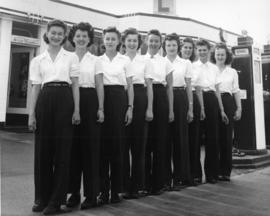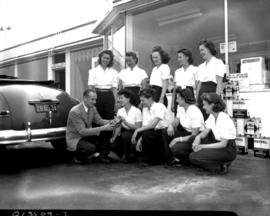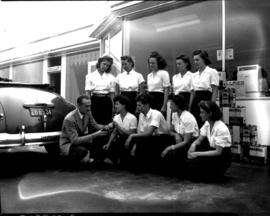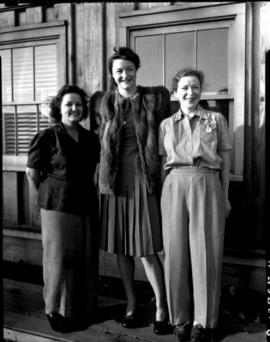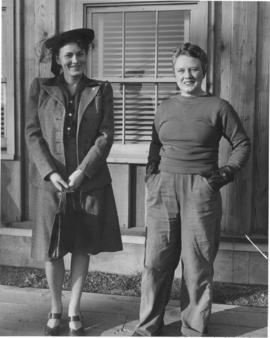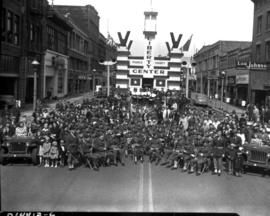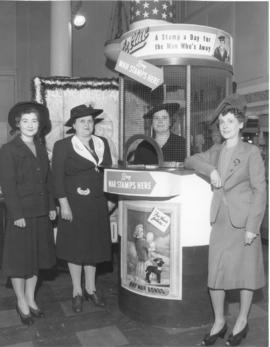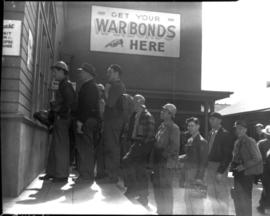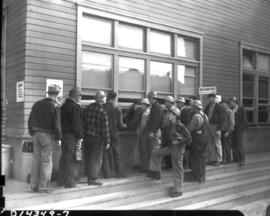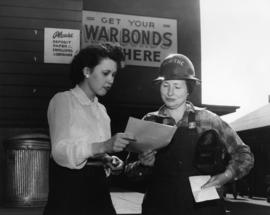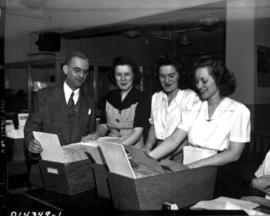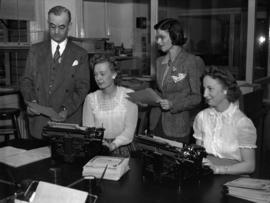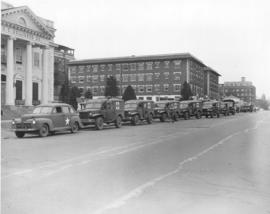- Item
- 1942-09-18
Part of Richards Studio Photographs
On September 18, 1942, Tacoma officials and South Tacoma residents gathered for the Dedication Ceremony for the new outdoor fireplace and Barbecue pit outside of the South Tacoma USO Club. The fireplace was built with donated money, materials and labor from a design by Silas E. Nelson, architect. Pictured at the ceremony are, left to right, John Lewtas, Bricklayers Union; Paul Lucht, Cement Finishers and Plasterers Union; South Tacoma USO Director Eva Hancock, Tacoma Mayor Harry Cain, and John Meyers, Northern Pacific Railway shops. On the floor is mascot "Taffy." (T. Times 9/21/1942, pg. 3)
World War, 1939-1945--Social aspects--Tacoma; USO clubs (Tacoma)--1940-1950; United Service Organizations (Tacoma); Fireplaces--Tacoma; Lewtas, John; Lucht, Paul; Hancock, Eva; Cain, Harry P., 1906-1979; Mayors--Tacoma--1940-1950; Meyers, John;

